Piao Huang
MAT: Motion-Aware Multi-Object Tracking
Sep 18, 2020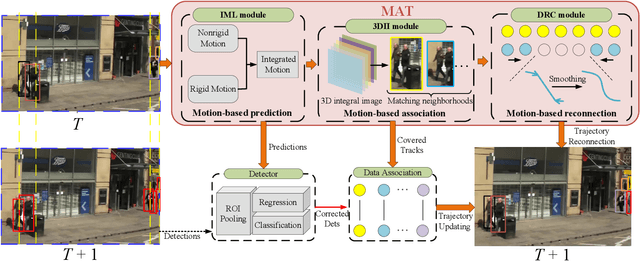
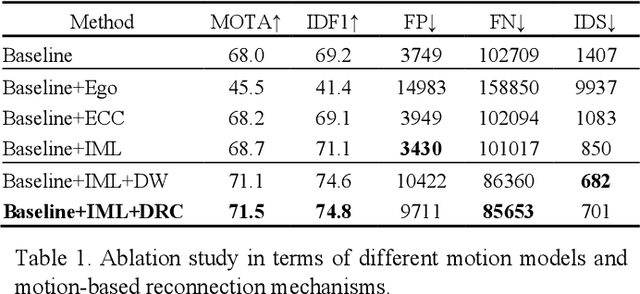
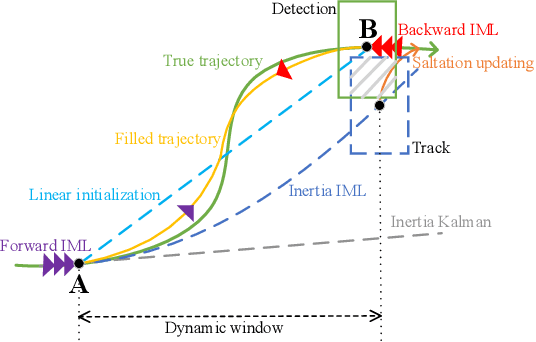
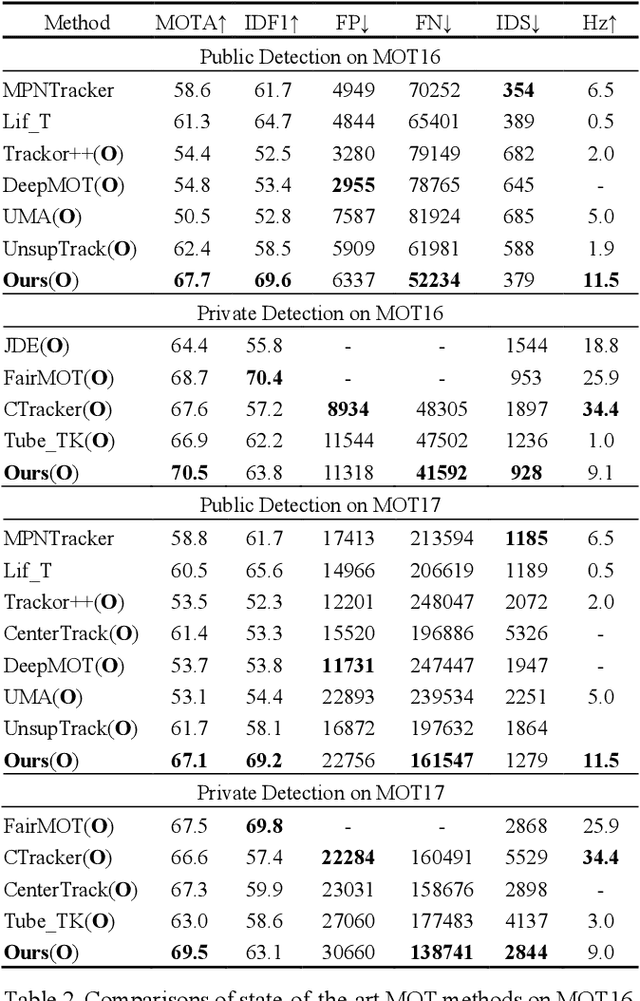
Abstract:Modern multi-object tracking (MOT) systems usually model the trajectories by associating per-frame detections. However, when camera motion, fast motion, and occlusion challenges occur, it is difficult to ensure long-range tracking or even the tracklet purity, especially for small objects. Although re-identification is often employed, due to noisy partial-detections, similar appearance, and lack of temporal-spatial constraints, it is not only unreliable and time-consuming, but still cannot address the false negatives for occluded and blurred objects. In this paper, we propose an enhanced MOT paradigm, namely Motion-Aware Tracker (MAT), focusing more on various motion patterns of different objects. The rigid camera motion and nonrigid pedestrian motion are blended compatibly to form the integrated motion localization module. Meanwhile, we introduce the dynamic reconnection context module, which aims to balance the robustness of long-range motion-based reconnection, and includes the cyclic pseudo-observation updating strategy to smoothly fill in the tracking fragments caused by occlusion or blur. Additionally, the 3D integral image module is presented to efficiently cut useless track-detection association connections with temporal-spatial constraints. Extensive experiments on MOT16 and MOT17 challenging benchmarks demonstrate that our MAT approach can achieve the superior performance by a large margin with high efficiency, in contrast to other state-of-the-art trackers.
Refinements in Motion and Appearance for Online Multi-Object Tracking
Mar 17, 2020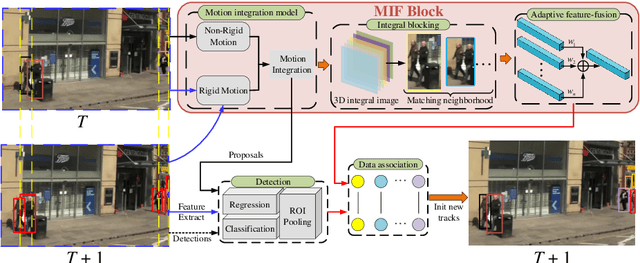
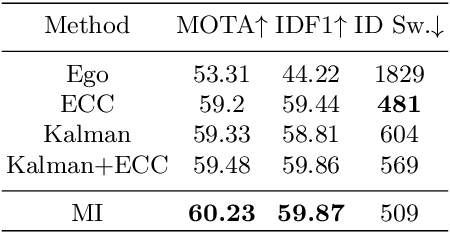
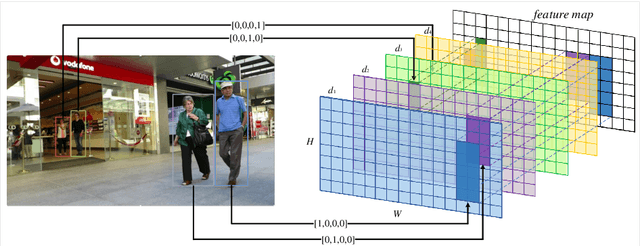
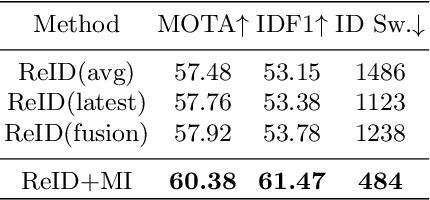
Abstract:Modern multi-object tracking (MOT) system usually involves separated modules, such as motion model for location and appearance model for data association. However, the compatible problems within both motion and appearance models are always ignored. In this paper, a general architecture named as MIF is presented by seamlessly blending the Motion integration, three-dimensional(3D) Integral image and adaptive appearance feature Fusion. Since the uncertain pedestrian and camera motions are usually handled separately, the integrated motion model is designed using our defined intension of camera motion. Specifically, a 3D integral image based spatial blocking method is presented to efficiently cut useless connections between trajectories and candidates with spatial constraints. Then the appearance model and visibility prediction are jointly built. Considering scale, pose and visibility, the appearance features are adaptively fused to overcome the feature misalignment problem. Our MIF based tracker (MIFT) achieves the state-of-the-art accuracy with 60.1 MOTA on both MOT16&17 challenges.
 Add to Chrome
Add to Chrome Add to Firefox
Add to Firefox Add to Edge
Add to Edge